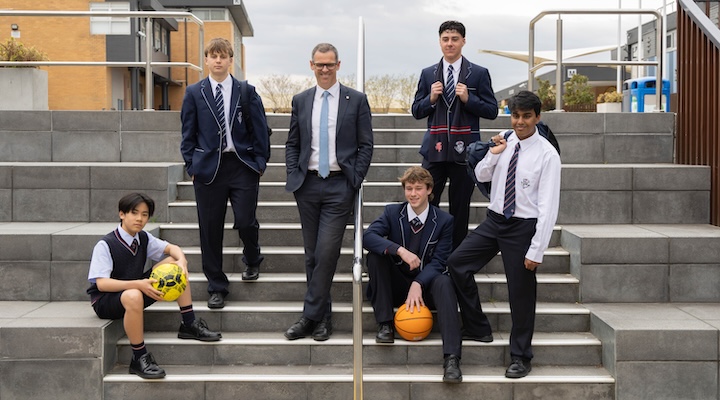The big business of school uniforms is thriving in Australia, driven by a complex mix of demand for quality, school branding and technological innovation. As education policy and cultural norms continue to evolve, the school uniform market has grown steadily – now the average Australian family spends $469 per secondary school student on uniforms each year. Meanwhile, the global uniform market size is projected to hit US$32.3 billion by 2026, according to a recent report published by Busi
y Business Research Insights.
One company leading the growing Australian uniform market is Uniform Group, which services over 700 schools nationwide through brands such as PSW and Academy Uniforms. It also holds exclusive teamwear licences for major names like Puma, July and Frank Green.
Balancing affordability and quality at scale
The Group’s CEO, Adam Wilkinson, identified several key drivers behind recent growth in the school uniform market:
“Families are increasingly seeking quality, ethically made garments that deliver durability and value for money,” Wilkinson told Inside Retail.
“Schools are also recognising the importance of uniform programs as part of their brand identity and community standards.
“Additionally, the increase in population, the elevation of sports uniforms in schools, and the shift to online retailing have all accelerated growth.”
This convergence of social and practical considerations has made uniforms a mainstay of the family budget and a strategic priority for schools. Moreover, affordability and quality are not competing priorities for Uniform Group – they are complementary.
“Our vertically integrated model allows full control from design through to delivery, ensuring premium quality at accessible prices,” Wilkinson explained.
“By managing production in-house, maintaining ISO-certified quality systems, and optimising logistics, we consistently deliver value.
“The result is tangible savings for families, without compromise on comfort, fit, or longevity.”
The Uniform Group’s strength lies in its vertical integration, managing design, manufacturing, warehousing and distribution in-house under one umbrella supported by ISO-accredited systems and ethical sourcing standards.
With more than 27 retail outlets, advanced online platforms and data-driven forecasting, Uniform Group can maintain its industry-leading fulfilment reliability for 700 Australian schools.
“This structure ensures consistency, efficiency, and a seamless experience for schools and families alike.”
Designing for the next generation
Inclusivity and representation have become increasingly central considerations in uniform design, evolving alongside society’s shift in values.
“Schools are asking for garments that are gender-inclusive, adaptive, and culturally respectful,” Wilkinson said.
“Our design and development teams work closely with school communities to ensure all students feel represented and comfortable, while maintaining the integrity of the school’s identity.”
Another key change in how Uniform Group designs is the addition of Australian fashion designer Peter Morrissey as a design ambassador.
“His 40 years of fashion expertise bring a new level of creativity, craftsmanship, and sophistication to schoolwear,” Wilkinson shared.
“Together, we’re redefining what a school uniform can be—uniting timeless style with function, identity, and pride.”
Salesian College Chadstone became the first school in the country to roll out a bespoke school uniform collection designed by Morrissey, as part of a new national partnership and design strategy with Uniform Group.
“This partnership positions Uniform Group at the forefront of design innovation in the education sector.”
Now, Uniform Group has its sights set on global growth, particularly in the Asian region, where it’s already servicing schools in mainland China and Malaysia.
“Our reputation for quality, consistency, and brand custodianship translates well internationally, particularly in markets that value premium Australian design and service standards,” Wilkinson concluded.







